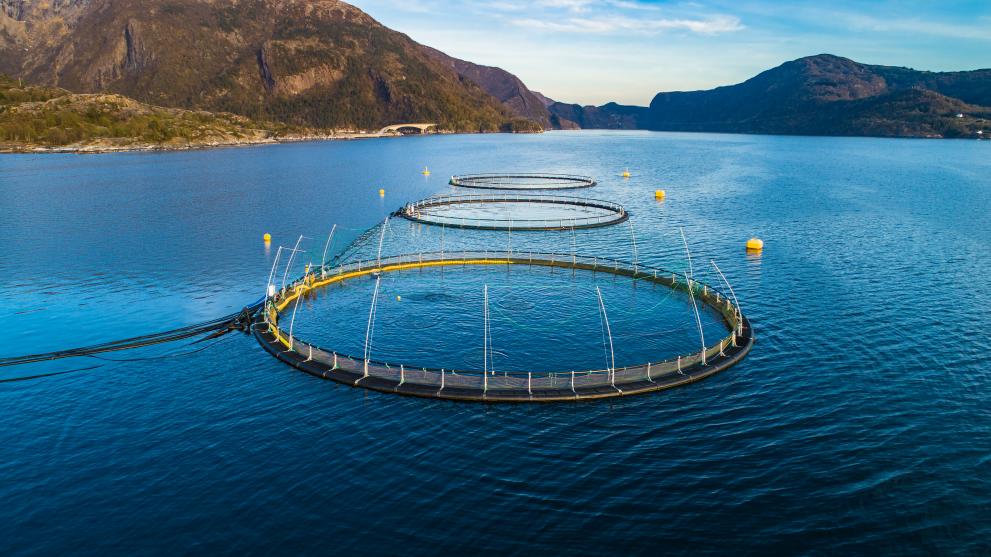
The EU aquaculture sector reached 1.2 million tonnes of produce and €4.1 billion in turnover in 2018, according to a new JRC report. However, the report estimates that the coronavirus pandemic hit the sector by decreasing income sources and increasing costs.
Globally, aquaculture – farmed fish, shellfish and aquatic plants – recently surpassed wild capture fisheries as the main source of all the seafood we eat. In the EU, aquaculture accounts for approximately 25% of the consumption of seafood. The EU Aquaculture Sector – Economic report 2020 shows that there were about 15,000 companies in the sector in the EU in 2018, employing 69,000 people. The sector’s sales volume increased by 2% and turnover increased by 11%, compared to 2016.
The report’s main sources of data come from national reporting up to 2018. The data shows that EU aquaculture production is concentrated in four countries: Spain (27%), France (18%), Italy (12%), and Greece (11%) - together accounting for 69% of sales and 62% of turnover.
Looking beyond 2018, the scientists developed and applied a ‘nowcast’ tool to estimate the current economic situation for aquaculture and the impact of the coronavirus pandemic on the sector. Based on this, the report estimates that the pandemic has led to a 17% decrease in sales volume and 8% decrease in prices. In particular, sales of marine fish are estimated to have fallen by 3%, of shellfish by 19% and freshwater fish by 10%.
The nowcast tool works by modelling the expected changes in weight of sales, total sales value, and employment, by applying variables from existing and estimated trends to the most recent data available for each country.
In normal times, the weight of produce in the sector is similar to the weight of sales. However, the report finds that the disruption caused by the pandemic led to fish remaining on farms to be sold at a later date. This led to an increase in feed costs, but also in other costs such as labour, repair and maintenance.
The report also contains the first EU-wide analysis of social data for the sector. It shows that those employed in aquaculture are primarily male (76%), aged 40-65 (about 43%), and working in the country of their nationality (83%), with the rest mainly coming from other EU countries.
Background
Demand for seafood is expected to continue to increase as the world’s population and median income increases, and as awareness of the health benefits of seafood grows.
European aquaculture can help to meet that demand – it is renowned for its high quality, sustainability and consumer protection standards. There is still a significant potential for growth of EU aquaculture, given that the EU imports the majority of the seafood that it consumes.
The EU’s Common Fisheries Policy helps to ensure that fishing and aquaculture are environmentally, economically and socially sustainable and that they provide a source of healthy food.
The Commission has been working, in close consultation with EU Member States and stakeholders, on updated strategic guidelines for aquaculture, which the Commission is expecting to adopt in the coming weeks. These guidelines aim at ensuring that EU aquaculture grows into a sector that is more competitive and resilient, as well as the global reference in terms of sustainability. They will provide guidance on the different aspects that are relevant to achieve those objectives and include recommendations for action. The Commission has invited EU Member States to update their multiannual national strategic aquaculture plans taking into consideration the discussions on the updated guidelines.
For the sector to grow, market intelligence at EU and national level is also essential. The ‘EU Aquaculture Sector – Economic report 2020’ helps to provide that knowledge base. It also gives detailed descriptions of the production levels of main species for each EU country, and the techniques used in the sector.
The report was developed in close cooperation with an expert working group of the Scientific, Technical and Economic Committee for Fisheries (STECF), an independent advisory body of the European Commission, and DG MARE, the Commission’s department responsible for maritime affairs and fisheries.
Related Content
Details
- Publication date
- 6 May 2021
